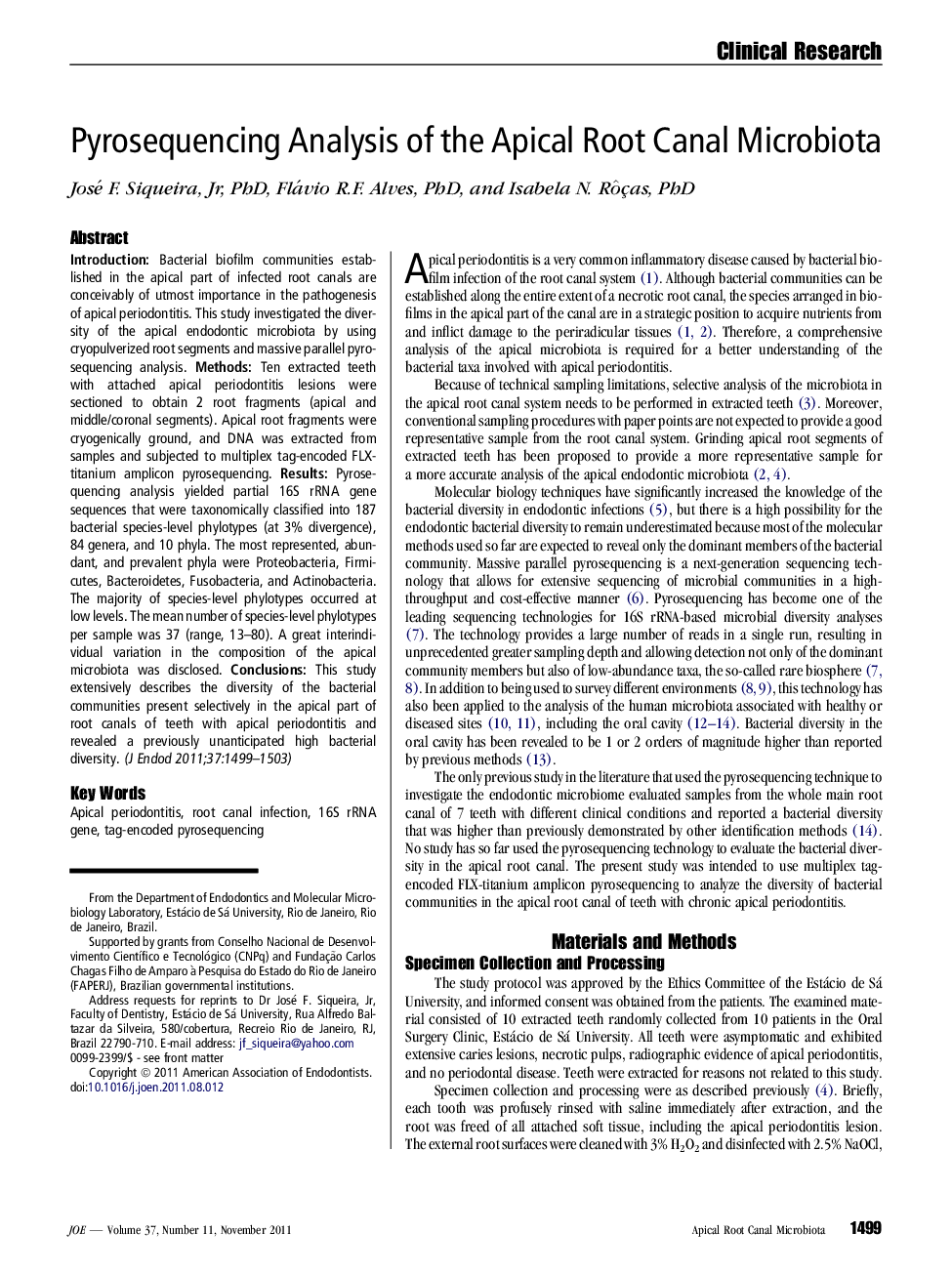| Article ID | Journal | Published Year | Pages | File Type |
|---|---|---|---|---|
| 3148858 | Journal of Endodontics | 2011 | 5 Pages |
IntroductionBacterial biofilm communities established in the apical part of infected root canals are conceivably of utmost importance in the pathogenesis of apical periodontitis. This study investigated the diversity of the apical endodontic microbiota by using cryopulverized root segments and massive parallel pyrosequencing analysis.MethodsTen extracted teeth with attached apical periodontitis lesions were sectioned to obtain 2 root fragments (apical and middle/coronal segments). Apical root fragments were cryogenically ground, and DNA was extracted from samples and subjected to multiplex tag-encoded FLX-titanium amplicon pyrosequencing.ResultsPyrosequencing analysis yielded partial 16S rRNA gene sequences that were taxonomically classified into 187 bacterial species-level phylotypes (at 3% divergence), 84 genera, and 10 phyla. The most represented, abundant, and prevalent phyla were Proteobacteria, Firmicutes, Bacteroidetes, Fusobacteria, and Actinobacteria. The majority of species-level phylotypes occurred at low levels. The mean number of species-level phylotypes per sample was 37 (range, 13–80). A great interindividual variation in the composition of the apical microbiota was disclosed.ConclusionsThis study extensively describes the diversity of the bacterial communities present selectively in the apical part of root canals of teeth with apical periodontitis and revealed a previously unanticipated high bacterial diversity.
